
How Does Cricket Scoring Work? Explained with Pictures!
How is cricket scoring calculated? Cricket has a unique scoring system that differs from other sports. It has its own methods of scoring: Running, Boundary, and extras. We'll take you through cricket scoring methods in detail.
Cricket Scoring Explained
What is a run in cricket? It is the basic unit of scoring, and players can score runs in three ways during the match: Running, Boundary, and Extras.
1. Runs in Cricket by Running
After the batter hits the ball, both players on the field must run to the opposite ends — from the striker's end to the non-striker's end.
- 1 Run: The two batters run once between the wickets, scoring a Single Run.
- 2 Runs: The two batters run twice between the wickets, scoring a Double Run.
- 3 Runs: The two batters run three times between the wickets, scoring a Triple Run.
For the run to count, part of their body or bat must touch the popping crease at the opposite end. This is how running between the wickets works in cricket! Want to know who mastered this art best? Check: Top 10 Best Batsmen in IPL History
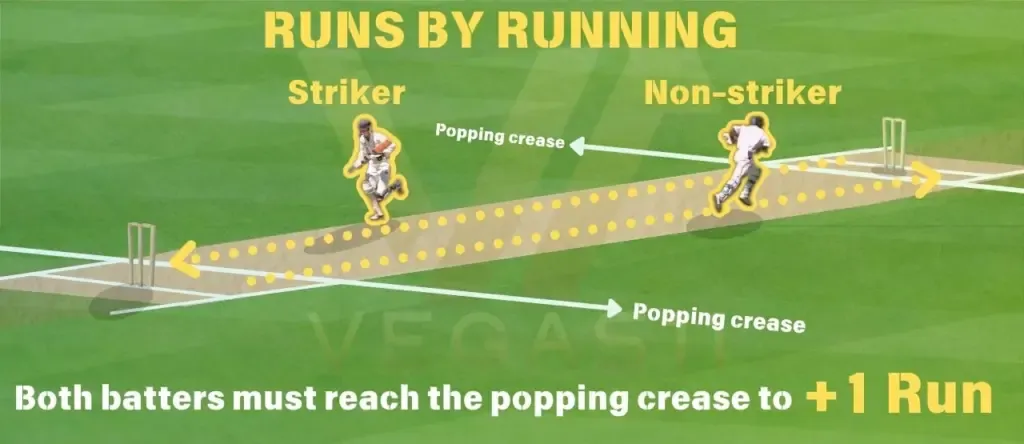
Higher running scores are quite rare and usually happen when the fielder makes a mistake, giving the batters a chance to run multiple times.
When are runs by running considered invalid?
Short Run: A run is considered invalid if the batter fails to fully pass the popping crease with either their foot or bat.
2. Runs in Cricket by Boundary
- 4 Runs: After the batter hits the ball, if the ball lands inside the field and either rolls or flies over the boundary, 4 runs are scored as a Boundary Four.
- 6 Runs: After the batter hits the ball, if the ball flies directly over the boundary line without touching the field, 6 runs are scored as a Boundary Six.
💡 If the batter hits a boundary, they do not need to run.
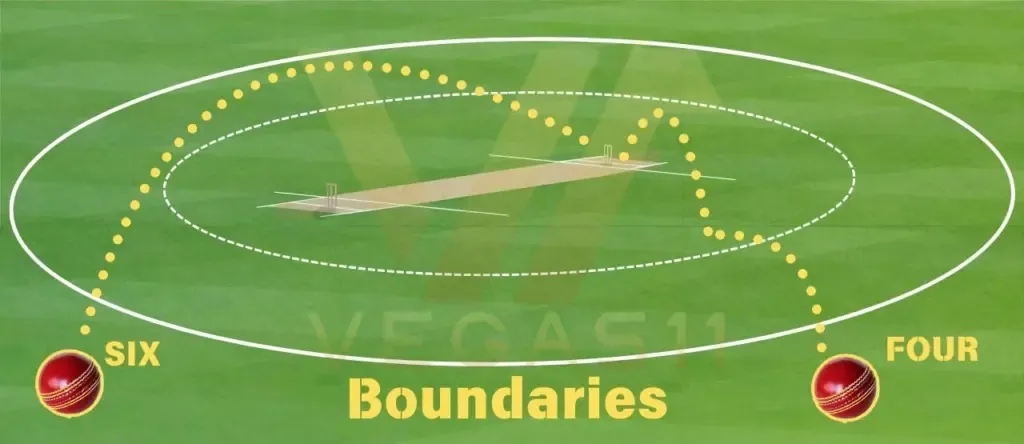
Boundary Priority Rule
When the batters start running after hitting the ball, if the ball crosses the boundary during their running, the score will be the higher of either the boundary score (4 or 6 runs) or the runs completed by the batters.
The lower score will not be counted, and only the higher score will be taken into account.
Overthrow Rule
Another situation is the "Overthrow." If the fielder stops the ball but then throws it too far, letting it roll over the boundary, the batter gets an extra 4 runs on top of the runs they completed by running.
Does a boundary count towards the batter's score?
Yes, unless the ball is not hit by the bat (e.g., Extras).
What situations count as a boundary?
1. When the ball crosses the boundary but is brought back into the field by the wind or other factors, it counts as a boundary for 4 or 6 runs, depending on whether it touched the ground inside the field.
2. When the ball touches the fence or boundary of the field, it counts as a boundary for 4 runs.
3. When the ball touches the players or any object on the field and then crosses the boundary, it counts as a boundary for 4 runs.
3. Runs in Cricket by Extras
Extras refer to runs awarded due to errors, violations, or other factors caused by the bowling team. These runs are not added to the batter's individual score but contribute to the team's total score.
- Wide Ball: A ball bowled by the bowler that is out of the batter's reach, the batting team is awarded 1 run.
- No Ball: If the bowler or fielder commits a violation, the batting team gets 1 or 2 runs, depending on the match rules.
- Bye: When the batter misses the ball, and the wicketkeeper or fielders fail to stop it, giving the batter a chance to run.
- Leg Bye: When the ball hits the batter’s body and deviates, and the wicketkeeper or fielders fail to stop it, giving the batter an opportunity to run.
- Penalty Run: If serious violations occur during the match, the umpire can award 5 penalty runs to the opposing team.
💡 In these situations, if the ball crosses the boundary, an additional 4 runs will be awarded!
Read More: 6 Worst IPL Decisions Where Umpires Turned a Blind Eye
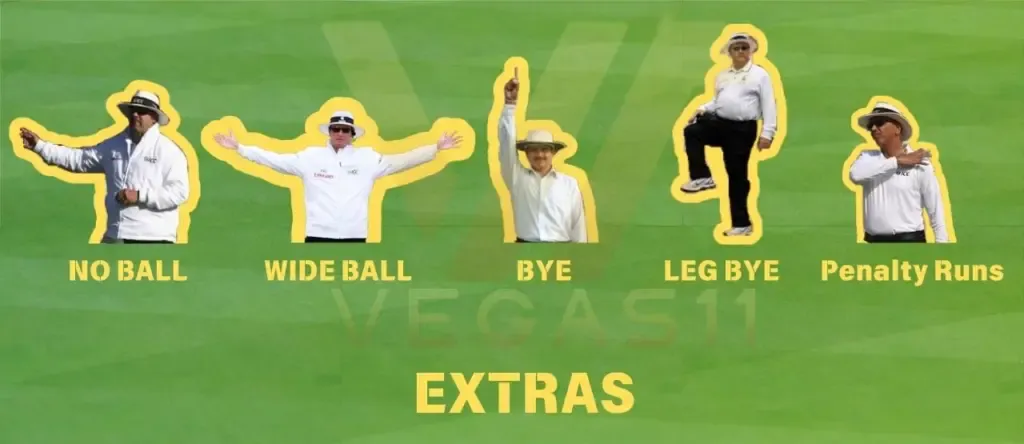
In ODI and T20 formats, a No Ball results in a free hit for the batter. During this free hit, the batter cannot be dismissed by being caught or bowled out.
If the ball is not hit and does not touch the field before crossing the boundary, can it count as 6 runs?
No, it will only be counted as 4 runs as Extras.
Wickets in Cricket
In a cricket match, each team has 10 wickets. The batter's goal is to score as many runs as possible, while the fielding team's aim is to dismiss the batter by hitting the wickets.
Every time a wicket is taken, the batting team loses a batter, which reduces their chances of scoring more runs.
| Common Dismissals | Rare Dismissals |
|---|---|
| Bowled | Handled the Ball |
| Caught | Obstructing the Field |
| LBW (Leg Before Wicket) | Hit the Ball Twice |
| Run Out | Timed Out |
| Stumped | |
| Hit Wicket |
Although wickets do not directly affect the score, they are just as crucial as runs in deciding the outcome of the match.
The team's total score is usually displayed as 'runs/wickets' or 'runs - wickets,' emphasizing the importance of wickets in the game. Still confused by all the slashes and numbers? Check this out: How to Read an IPL Scoreboard: Understanding Cricket Stats
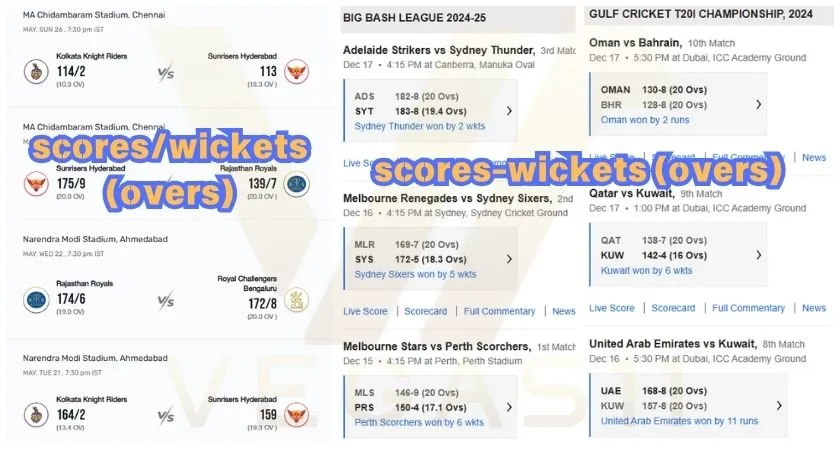
Understanding how cricket scoring works helps you follow the progress of the match more easily.
With this knowledge, you can even predict which team is likely to win while watching the match and may even earn cash prizes!
Popular betting site Vegas11 offers multilingual real-time cricket scores, match statistics, and free live streams. Join Vegas11 and see how much you know about cricket scoring!
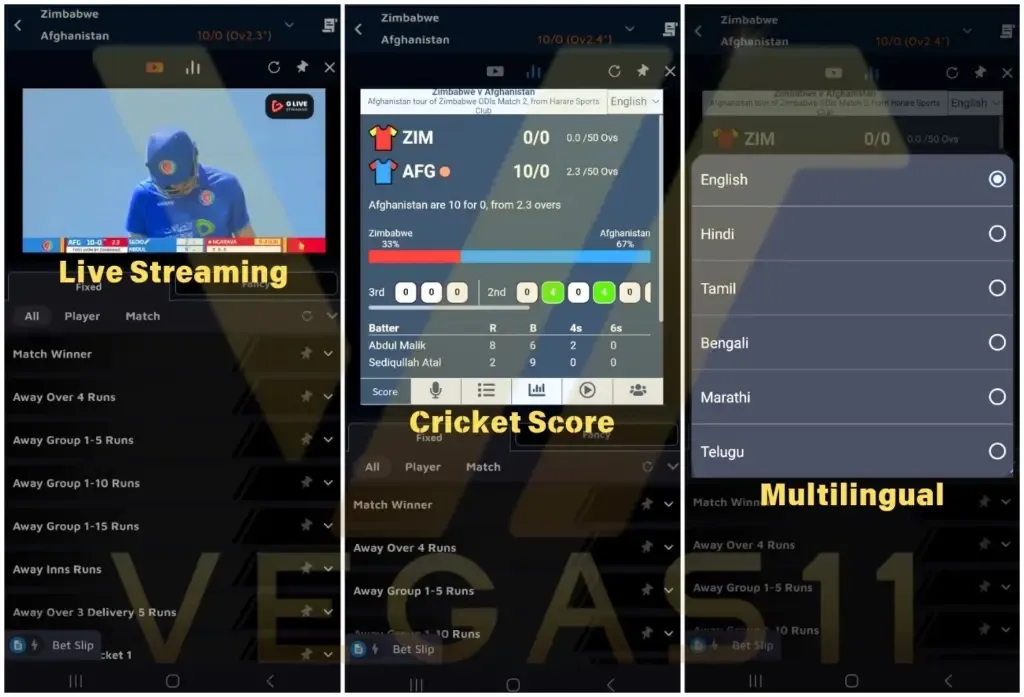
How is cricket scored?
The total score is calculated through running, Boundary, and extras.
How to read a cricket score?
It is usually displayed as scores/wickets or scores-wickets. For example, a score of 114/3 (or 114-3) means the total runs are 114, and 3 wickets have been taken.
Where can I watch live cricket scores and streams?
Vegas11 offers high-definition live streams, real-time scores, and detailed statistics for betting.



